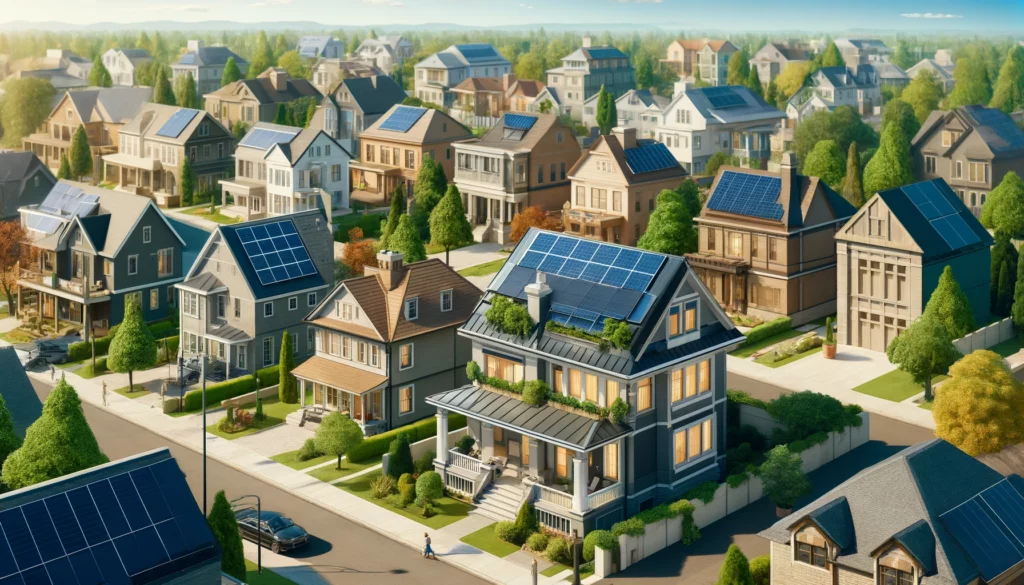
Introduction
Solar panels have become synonymous with sustainable energy, playing a critical role in the global transition towards cleaner power sources. They harness sunlight and convert it into electricity, but not all panels are the same. Their size and production capabilities can vary widely, impacting their application and efficiency. In this blog, we’ll delve into the different sizes of solar panels, their production capacities, and what you need to know to make an informed decision.
Size Matters: Types of Solar Panels
Solar panels come in various sizes, primarily categorized into residential, commercial, and utility-scale.
1. Residential Solar Panels: Typically, residential solar panels measure around 5.4 feet by 3.25 feet, with a power output ranging from 250 to 400 watts per panel. These are designed to fit on rooftops, maximizing space while providing sufficient power to meet household energy needs.
2. Commercial Solar Panels: Larger than residential panels, commercial solar panels are used in business and industrial settings. They measure approximately 6.5 feet by 3.25 feet and can produce between 350 to 500 watts. These panels are designed for buildings with higher energy demands and larger roof spaces.
3. Utility-Scale Solar Panels: The largest of the bunch, utility-scale solar panels are used in solar power plants. Their size can vary significantly, but they are much larger than residential and commercial panels, often custom-designed for the project. These panels are part of extensive arrays that can generate megawatts of power, sufficient to supply electricity to thousands of homes.
Understanding Solar Panel Production
Solar panel production is measured in watts (W), indicating the panel’s capacity to generate power under ideal conditions. This capacity, known as wattage, varies with size, technology, and efficiency.
1. Wattage and Efficiency: The wattage of a solar panel is directly related to its size and the efficiency of the solar cells used. Higher efficiency panels can produce more electricity in a given amount of space compared to less efficient ones. For example, a high-efficiency residential panel might generate 400 watts, while a standard panel of the same size produces 300 watts.
2. Technology Variations: The technology behind solar panels also influences their size and production. Monocrystalline panels, known for their high efficiency and sleek black appearance, typically have higher power outputs than polycrystalline panels. Thin-film solar panels, on the other hand, are less efficient but can be made in larger sizes and are more flexible in their application.
Production Factors
Several factors affect the production of solar panels, including:
1. Sunlight Exposure: The amount of sunlight a panel receives directly impacts its power production. Panels installed in areas with high solar irradiance will produce more electricity than those in less sunny locations.
2. Angle and Orientation: The angle and orientation of solar panels affect their ability to capture sunlight. Panels should be installed facing the direction that receives the most sunlight, usually south in the Northern Hemisphere, and tilted at an angle optimized for the location’s latitude.
3. Temperature: Solar panels operate more efficiently in cooler conditions. High temperatures can reduce the panel’s efficiency and, consequently, its power output.
Solar Panel Lifespan and Degradation
Solar panels are built to last, with many manufacturers offering warranties of 25 years or more. However, their efficiency gradually decreases over time, a process known as degradation. On average, solar panels degrade at a rate of 0.5% to 3% per year, influenced by factors like exposure to the elements, maintenance, and the quality of the solar cells.
Choosing the Right Solar Panel
When selecting solar panels, consider the following:
1. Energy Needs: Assess your energy consumption to determine how many panels you need and what size will be most efficient for your space.
2. Roof Space: The size of your available installation area will dictate the size and number of panels you can install.
3. Budget: Higher efficiency panels are usually more expensive. Balance your energy needs with your budget to find the best fit.
4. Local Climate: Consider your local weather patterns and solar irradiance levels. Areas with more sunlight may require fewer or smaller panels to meet the same energy needs.
Conclusion
Solar panel size and production capacity are crucial factors to consider when planning a solar installation. Understanding the different types of panels, their efficiencies, and how various factors affect their production can help you make an informed decision tailored to your energy needs and environmental conditions. As solar technology continues to advance, the options for sustainable, efficient, and cost-effective solar solutions will only expand, paving the way for a cleaner and greener future.
